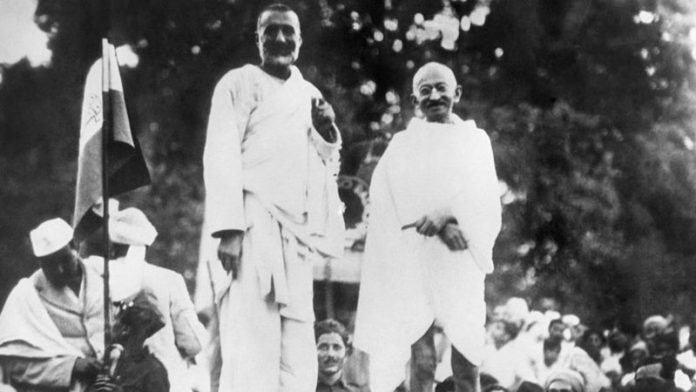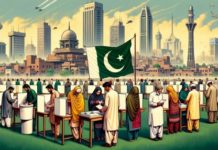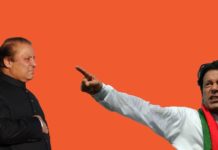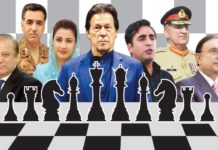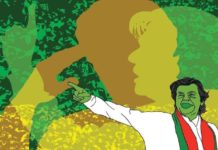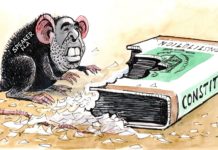It was August 1948. The people of Pakistan were busy preparing for the first anniversary of independence and it was decided at the state level that the first anniversary of independence would be celebrated on August 14, 1948.
Just two days before the anniversary, a report from the village of Babrra in the present-day Khyber Pakhtunkhwa province and the then NWFP town of Charsadda reported that an alleged operation by the government of Chief Minister Khan Abdul Qayyum Khan had killed more than 600 protestors.
They had gathered to protest against the arrest of ‘Khudai Khidmatgar’ Khan Abdul Ghaffar Khan. We have to go back in time to explain the causes of this incident.
After the Provincial Assembly elections in 1937, the Governor of NWFP appointed Sahibzada Abdul Qayyum as the Chief Minister of the province, but his ministry was soon overthrown by a no-confidence motion, and for the first time in NWFP, Dr. Khan Sahib, The Ministry of ‘Khudai Khidmatgar’ movement was established under the leadership of Abdul Jabbar Khan.
In 1939, when the ministries of eight Indian provinces resigned in protest against the British war policy, they included the ministry of Dr. Khan Sahib of NWFP.
After the end of World War II, the Ministry of Khudai Khidmatgar was re-established in NWFP and Dr. Khan Sahib once again became the Chief Minister of the province.
Shortly before the formation of Pakistan, a referendum was held in NWFP on the issue of joining and non-joining Pakistan. The Khudai Khidmatgar movement boycotted the referendum and as a result, the Muslim League easily won the referendum and NWFP was merged with Pakistan.

At the time of establishment of Pakistan, Dr. Khan Sahib was the Chief Minister of NWFP. But only eight days later, on August 22, 1947, Quaid-i-Azam (Muhammad Ali Jinnah) dismissed his ministry. He was accused of showing “disloyalty to the country” by not attending the flag-raising ceremony on August 15, 1947.
After the removal of Dr. Khan’s government, Khan Abdul Qayyum Khan was made the Chief Minister of the province.
Dr. Khan’s younger brother Khan Abdul Ghaffar Khan, better known by the title of ‘Bacha Khan’, was of the view that since Khudai Khidmatgar was an ally of the Congress and the Congress had accepted the principle of partition of India and Pakistan, the logical conclusion was: Khudai Khidmatgar also recognize Pakistan. This was the logical basis on which Bacha Khan decided to join the Constituent Assembly of Pakistan instead of India.
His government was in NWFP and this government became the first target of the new rulers. Despite this, the Khudai Khidmatgar movement did not give up their patience and pledged allegiance and service to Pakistan at their headquarters in ‘Sardaryab’ (is a local tourist and picnic spot near Peshawar). He protested against the undemocratic move of dismissing Dr Khan’s ministry but announced that his movement would not create any problems for the new central and provincial governments.
Not only had this, in March 1948, Bacha Khan fully participated in the meetings of the Constituent Assembly. In these meetings, declaring allegiance to Pakistan, he reiterated his commitment that his movement is not destructive but constructive in nature and that the Khudai Khidmatgar aims to bring social reforms but the British had directed this movement towards political partnership with the Congress in the past.
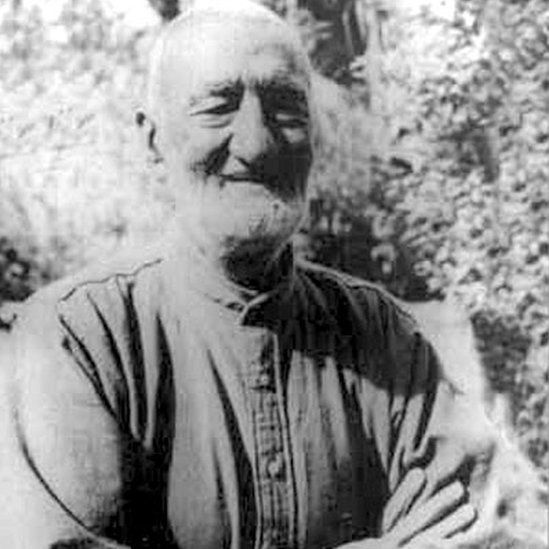
Earlier, the founder of Pakistan Muhammad Ali Jinnah had invited Bacha Khan to his house for dinner. He reassured the founder of Pakistan that he was loyal to Pakistan and since there were doubts about him in some quarters, he would not take part in politics until these suspicions were dispelled. Bacha khan pledged that his movement will only work towards social reforms.
In an interview after the meeting, Bacha Khan said, “Quaid-e-Azam was very satisfied with my clear words, which I said very honestly, and he hugged me and said goodbye with great love.”
But when the founder of Pakistan visited Peshawar in April, some political players’ conspired that Bacha Khan and his organization were not credible. They even said to have told Mr. Jinnah that his life could be in danger if he attended any of their political gatherings.
Bacha Khan said, “So when I took the invitation to Mr. Jinnah at the government house to attend a function organized by the Khudai Khidmatgar movement, the Quaid-e-Azam expressed his reluctance.” Khan, who was trying to reconcile, soon became a shady character in the eyes of the newly established government and Qayyum Khan became an absolute authoritarian and engaged in retaliation.
On May 8, 1948, Bacha Khan attended a meeting of political activists in Karachi. In which it was decided in principle to form a new political organization ‘People’s Party’. The party was being formed to meet the needs of a constitutional opposition. Bacha Khan’s other associates included GM Syed and Abdul Samad Khan Achakzai. Ghaffar Khan was elected president of the new organization and GM Syed as general secretary.
The aims and objectives of the ‘People’s Party’ included progressive social change with the support and consent of the people of provincial autonomy and friendly cultural relations with all neighboring countries, including India.
It was also decided that the Khudai Khidmatgar movement would retain its separate identity. It will serve as a volunteer corps for the new political party and will be spread across all provinces. For this purpose, Bacha Khan returned to the NWFP and started touring the province, but within a month, on June 15, he was arrested along with his sons Abdul Wali Khan and Qazi Ataullah Khan.
Abdul Samad Achakzai was also taken into custody and GM Syed was expelled from Karachi. Thus a new political organization, which was beginning its work for national unity throughout the country through the democratic process and the struggle for political freedom, died with its birth.
But what happened next was more than expected.
In July, the NWFP government also declared the Khudai Khidmat movement against the law through a public safety ordinance. The ordinance empowered the government to detain anyone indefinitely without giving a reason. The detainee did not even have the authority to challenge his arrest in a court of law.
Under the ordinance, several people were arrested and their properties confiscated, including Bacha Khan, Dr Khan Sahib, Qazi Ataullah, Arbab Abdul Ghafoor and many others.
Naturally, the detention of Bacha Khan and his associates provoked a strong reaction from the members of the Khudai Khidmatgar movement. In late July 1948, Bacha Khan’s elder brother, Dr. Khan Sahib, was arrested when he announced a rally against the detentions at Babbra near Charsadda.
On August 5, the Divisional Magistrate of Charsadda enforced Section 144 in the area, but as per the announcement of Dr. Khan, on August 12, 1948, members of the Khudai Khidmatgar organization from all over the province gathered at Babbara.
It is said that the number of these people was around 25,000. The provincial administration called in a heavy contingent of police and paramilitary forces to quell the protest. Thousands of people had gathered when suddenly unarmed workers were shot.
As a result of the firing, 25 people were killed and 35 injured, according to an official announcement, but unofficial estimates put the death toll at more than 600. Most of the bodies were mysteriously disposed of, the injured were not allowed to enter government hospitals and were denied medical treatment.
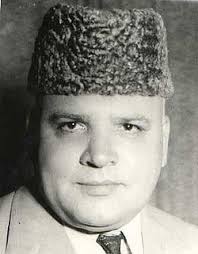
Speaking at ‘Chowk Yadgar’ (formerly Hasting’s Memorial, is a famous landmark in the old walled city of Peshawar) immediately after the firing, Qayyum Khan said that he had “given a lesson to the workers of Khudai Khidmatgar movement in Babbra that they will remember for a lifetime.”
“I enforced section 144 in Babbra. When the people did not disperse, they were fired upon. They were lucky that the police ran out of weapons, otherwise not a single person would have survived,” he said. This is not a British government but a Muslim League government and the name of this government is Qayyum Khan. Workers of Khudai Khidmatgar movement are traitors of the country. I will erase their names from the face of the earth”.
Qayyum Khan added that the Red Shirts had started a civil disobedience movement after the arrest of their leader Bacha Khan and planned to spread unrest in the entire province. They had unlicensed weapons and they were trying to destabilize the entire province. Were bent on spoiling. If they had succeeded in spreading anarchy, it would have had very dangerous consequences.
This was the situation in NWFP, but in other parts of the country, especially in Punjab, the number of people condemning the Qayyum Khan government’s action was not high.
However, there were a large number of organizations who were praising this ‘Iron Man’ of the NWFP, they were happy that as a result of this operation, the chaotic and troublesome voices of the border province have been suppressed. There were some elements who called Qayyum Khan an ideal ruler. They said that the government in other provinces of Pakistan should also be in the hands of such people who are equipped with the ability and courage to crush such elements who are against Islam and Pakistan.
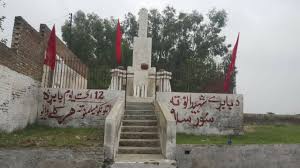
The editorial of Nawa-e-Waqt on the Babbra massacre was that the Chief Minister of NWFP Khan Abdul Qayyum Khan deserves congratulations for keeping a close watch on the traitors in the province who have accused Qayyum Khan of terrorism and dictatorship. These ignorant people are not aware of the real situation of NWFP and if despite knowing the situation they are cursing the Chief Minister of NWFP, then one must question their intentions.
“There may be a thousand objections to Khan Abdul Qayyum Khan, but as far as action against the traitors and their uprooting are concerned, we are compelled to pay tribute to him and we can fearlessly say that.” Quaid-e-Azam and the government of Pakistan have the same opinion in this matter and Khan Abdul Qayyum Khan has their full support. If Khan Abdul Qayyum Khan takes undue advantage of his powers to crush these anarchic elements, we will strongly condemn him. He has worked hard to crush the national traitors, he deserve applause.
This editorial comment of Nawa-e-Waqt has been copied with the help of Zahid Chaudhry’s eighth volume of Pakistan’s political history. However, the reflection of the ‘Daily Inqilab’ published from Lahore also did not give any special importance to this tragedy.
Khudai Khidmatgar movement demanded the establishment of a judicial commission on this massacre, but no judicial commission was ever formed and those involved in this incident were not brought to justice. In our history, the tragedy of ‘Jallianwala Bagh’ and ‘Qissa Khawani Bazaar’ is well documented, but all the records regarding Babbra are never brought to light.
Pashtuns call the incident the Jallianwala Bagh of the NWFP and remember Khan Abdul Qayyum Khan as General Dyer of the NWFP. It will not be out of place to mention here that Quaid-e-Azam was alive at the time of the Babbra tragedy and was fighting the last battle of his life in Ziarat.
Note: The article was first published in BBC Urdu


